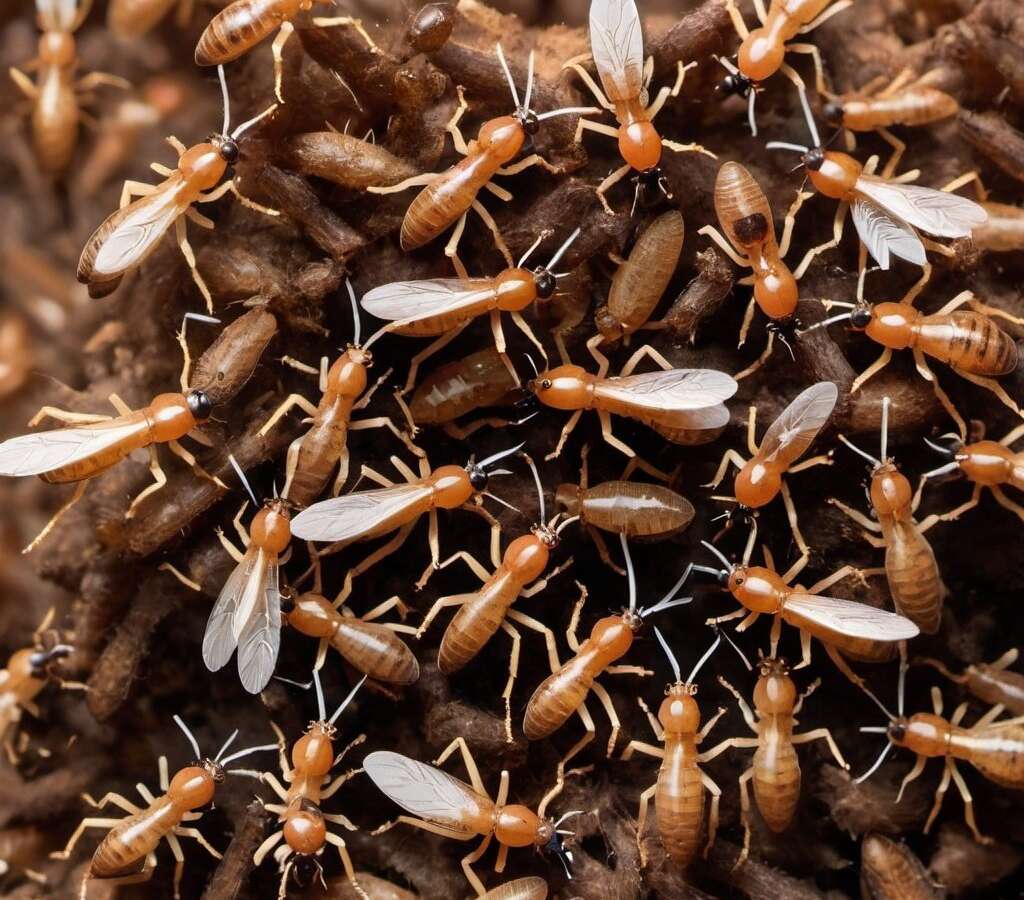In this part of the country, we have termites that must live underground. These subterranean termites live in a colony that gives each insect a role to play in their survival. As the spring months near, a huge number of these underground termites will suddenly be found in swarms, above ground, just to dissipate in a few hours. Many people want to know why termites swarm? When a colony matures, it produces alates, or reproductive queens and kings. They swarm to meet other alates from other colonies, and then go start new colonies.
So swarming is essentially the Tinder of the termite world. In this way, colonies pass on their genes to new colonies, and diversify those genes by introducing other colonies to the process. Colonies know when to produce these alates, when food supplies are not enough to support the colony’s population, and by temperature and precipitation. This tips off the colonies to send out their alates, coordinating all the colonies in a given area.
TERMITE SWARMING AND THEIR LIFE CYCLE
Within the colonies, termites start as an egg. They hatch as a larvae and start the process of growing. After four molts, or loosing their skin, they will either be a worker or nymph. The nymphs will later become alates and make an attempt at reproducing the colony. As swarming season grows near, the termites will build a tube going straight up into the air. This swarm tube will become the launch site for the alate.
The alate will take flight when the conditions are just right. His or her flight can be as quick as a few seconds, or a few minutes. Once the swarm begins, kings and queens from multiple colonies will pair up and land. Their wings will break off, and the king will follow the queen until she finds a suitable place to start the colony. They will build a nuptial chamber underground, mate and start laying eggs, starting the whole process over again. This is why termites swarm.
THE DANGERS OF SWARMING
Swarming can be a very dangerous activity. Even though a large colony may produce many swarmers, only a very small percentage actually make it to creating a new colony. Alates are terrible fliers. Its common for them to get caught in a building, where there is no food for them. They can land on hot pavement and dry out.
Predators can be a huge factor. This is one of the reasons why they swarm. A larger number of reproductives means a higher chance of at least some of them creating their own colony. Some predators will be scared off by so many of them. And the clock is against them as well. If they are above ground too long, they will dry out.
WHAT TO DO ABOUT SWARMERS
If you see a swarm of termites, the proper thing to do is probably nothing. Termites found in nature are an important part of the ecosystem. They remove old and rotting wood from our forests. Its only when they attack our structures that they become a problem. And swarms don’t last very long. If you did see one, and tried to go and get a spray it spray them, they would be gone by the time you got back.
If you see a swarmer in your home, it does not necessarily mean that you have a termite problem, but it could. This is the time to have an experienced exterminator inspect your home. They will search for swarmers, mud tubes and termite damage. These three things together will tip them off to know what the next course of action is.
If you are in need of an exterminator, Contact Us as TermMax Pest Control. We are here to help!




